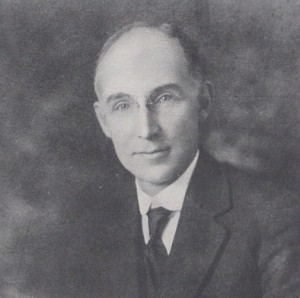The Founding of Middlebury College
Oct. 31, 1800
Middlebury was chartered as an institution despite a mild controversy over its attempt to take funding state funding away from the University of Vermont which was being founded at the same time. The town leaders associated with the founding of the college — Storrs, Miller, Chipman, Matthews, and Painter — were all financially well-off white men from Connecticut and Western Massachusetts associated with the (Calvinist) Congregational Church. They were, according to David Stameshkin, “attracted by the virgin land” of Vermont (Vol. 1; 14) and, in building the town of Middlebury, hoped to make it the pre-eminent center of Vermont. An oft-unacknowledged figure in the founding of the College was President of Yale Timothy Dwight who contributed to the founding of Middlebury so that it might “become a bastion of orthodox Congregationalism in opposition to the University of Vermont, which represented the tolerant religious liberalism her despised” and also potentially because he was a Federalist and and wanted Middlebury founded “as part of a Federalist strategy to educate Vermonters against the evils of Republicanism” (Stameshkin Vol 1, 22; 32).
Middlebury receives state funding
1888
A little-known piece of Middlebury College history is that starting in 1888 the College began to receive funding from the state. Though the initial sum was simply $2,400 in scholarship aid for Vermonters interested in attending college (the same amount granted to the University of Vermont for such a purpose), by 1915 the state was supplying a full third of the College’s annual income, approximately $28,800. The Campus newspaper reported this as a victory: “Middlebury is now free to do her work as a public institution of Vermont, as closley related to the State as any college within her borders” (Vol. 1, 207; 229; 252). Stameshkin concludes that “[t]he state seemed to have vindicated [President] Thomas’s aspirations to turn Middlebury into a college that would serve the people of Vermont” (252). In other words, while a part of Middlebury’s image today is one of a successful private liberal arts college, one of the reasons that Middlebury is still around today is that for a long time the school was a public university funded by the people of Vermont for the people of Vermont.
President Thomas takes first steps toward attracting wealthy students
1908
During President John Thomas’s tenure, reports Stameshkin, “because most of the students were from modest means, a strong feeling of social democracy had developed” (Vol. 1; 270). For Pres. Thomas, this was not good enough. He commissioned the building of the large and luxurious Hepburn Hall in the hopes that it would attract more “paying students” to Middlebury (271). He also publicly admonished students for hoping for a democratic school in response to their worries that Hepburn Hall and other such developments would “create a dual social-class system on campus” (Vol. 1; 271). This marked the beginning of the College having enough funds to attempt to craft an image of itself as a school for the elite. Though they had attempted to be such a school for about a century, a lack of money always got in the way. Now that fundraising was proving to be more fruitful, Middlebury College could become a mainstay for families of privilege that it was always hoping to be.
Consolidating Vermont Colleges debate
1911
In 1911 talks began about creating a union of the colleges in Vermont (UVM, Middlebury, and Norwich). This was a plan that Middlebury Trustee A. Barton Hepburn lauded for its potential to be more “productive and economical” and would give its graduates “the primary prestige to which they are entitled” (quoted in Vol. 1; 250). Thomas attempted to convince Hepburn and other business-minded board members to reconsider their support. In a letter of support for Thomas and the maintenance of a separate Middlebury College, Dean Walter Howard wrote, “We have reached out, are reaching out, and will continue to reach out, after the boy who does not know that he can go to college, to the boy to whom a college education is a dream. The educational institution living in the pride of its own bigness can never reach the poor, can never encourage the timid, can never accomplish the good in the aggregate that smaller colleges can accomplish, each working in its own field and each living to the utmost the fulness of its own life” (Vol. 1, 251). Hepburn ultimately backed down and any talk of consolidating Vermont colleges came to an end later that year.
Student government is formed
~1912-1913
In a move that on the surface appeared to be a win for student power, the Middlebury administration established the existence of student governments (one for the men’s college, one for the women’s). However, as Helen Horowitz explains in her book Campus Life, the purpose of the SGA “was not to empower college leaders, but to foster communication with them and co-opt them. Self-government normally meant that while undergraduates might give opinions and advise, they could not make the rules, or at least not the important ones” (Horowitz 108). In other words, student power as determined by institutional power is not necessarily a radical shift in the interests of the people.
